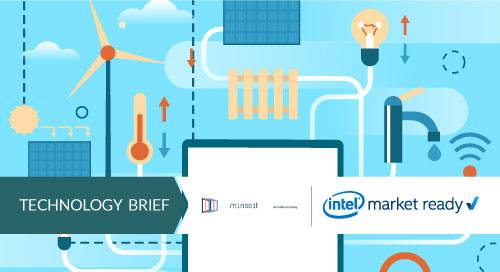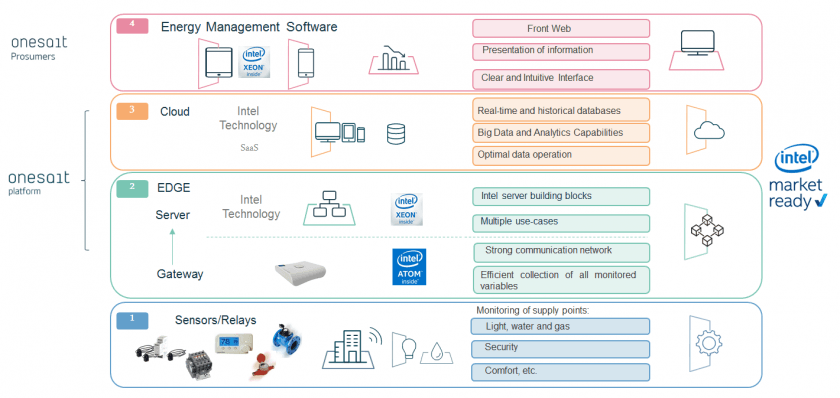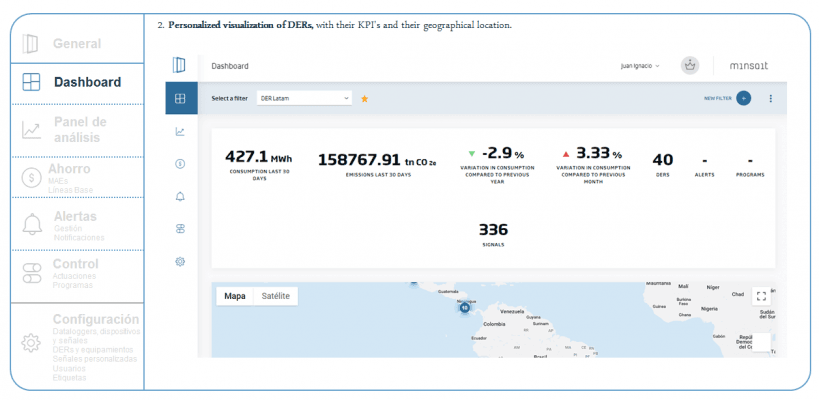Building Automation as-a-Service Cuts Energy Costs

Throughout the world, building owners spend far more than needed on heating and cooling. In the United States alone, there's an overspend of $600 million each year.
Various building energy management solutions (BEMS) have been created over the years to address these costs. But many are overly complex, making them difficult for small- and medium-size enterprises (SMEs) to deploy and manage.
To solve this problem, the latest BEMS have been designed specifically for ease of use. These new solutions are helping SMEs achieve their energy efficiency goals—and helping companies meet government regulations.
For example, a well-known public institution that develops vocational training programs had been exposed to spikes in hydroelectricity prices due to El Niño weather patterns. Until recently, the institution struggled to manage the resulting energy costs.
But with the latest-generation BEMS from Indra Sistemas, S.A., this institution was able to automate its facilities. Since deploying the solution at 28 power-intensive sites, it saved more than 20 percent in energy costs.
IoT Disrupts Conventional Energy Management
The Onesait Disruptors Prosumers solution from Minsait, an Indra company, is an example of this new approach (Figure 1). This software-as-a-service (SaaS) solution offers a simpler way for utilities and enterprises to implement BEMS while avoiding capital outlay.

The first layer of the open solution wirelessly gathers data from energy meters, thermostats, and other equipment. From there, IoT middleware translates the data into a uniform format.
By interfacing with existing equipment and avoiding expensive rewiring, “we’ve helped democratize energy efficiency for customers that previously lost out on savings opportunities,” said Antonio Boto Seco, an energy efficiency manager at Minsait.
Data is handled on-site with Intel® processors, using a rules engine to execute and process events. The platform also uses cloud-based analytics, machine learning, and digital twin technology to rapidly generate insights and provide recommendations.
Once it is deployed, building managers can gain real-time visibility into their energy, gas, and water use. The solution can also increase efficiencies by automating action on specific circuits, machines, and lighting as well as modify temperature set points when the platform detects consumption that’s out of norm.
Part of the SaaS model includes providing energy conservation measure recommendations specific to the customer, along with guidance on their implementation. The building manager can then use the Onesait Platform to manage these actions.
The solution also enables managers to view data on multiple buildings, making it simple to establish and oversee both short- and long-term efficiency plans.
Opportunities to Increase Revenue
In addition to end-user benefits, the solution’s analytics can also help utilities increase revenue. “In some countries, utilities can cross-sell energy efficiency products like LED lighting, boilers, and even solar panels, and not just help administer incentive programs,” said Boto Seco.
These added-value services can also help utilities reduce customer churn and compete with tech giants who are eyeing the market. “After seeing what PayPal has done to the credit card industry or Uber to the taxi business,” said Boto Seco, “there’s no such thing as business as usual.”
Boto Seco also explained that the inclusion of the term Prosumer in the solution’s name refers to the ability to manage things beyond energy consumption. By taking a transactive energy approach, modules that perform specific functions, from managing HVAC to solar panels and storage batteries, can be added to the solution that can take advantage of the platform’s ability to analyze data in real time in a secure and stable manner.
This enables building managers to sell surplus renewable energy to the utility as well as manage demand response programs, electric vehicle charging stations, and other processes. The result is improved energy and economic efficiency through better coordination of electricity generation, transmission, distribution, and consumption.
IoT and AI Building Automation Control
An intuitive interface helps building managers customize their dashboard (Figure 2) so they can view KPIs on energy consumption and other metrics to make data-driven decisions related to energy efficiency, demand response, renewable energy generation, and other use cases. Managers can easily compare current and historical data.

They can also create and monitor ECMs (Energy Conservation Measures) by defining reference periods and baselines to verify savings. Other capabilities include configuration and management of alerts to detect and automatically respond to costly anomalous behaviors.
Today SMEs are savvy in their adoption of new technologies that enable them to gain control of their energy use and save money. As an Intel® IoT Market Ready Solution, the Onesait Disruptors Prosumers SaaS solution enables building managers, SMEs, and utilities to take advantage of energy management technologies—without the upfront cost—that previously had been available only to the largest enterprise customers.